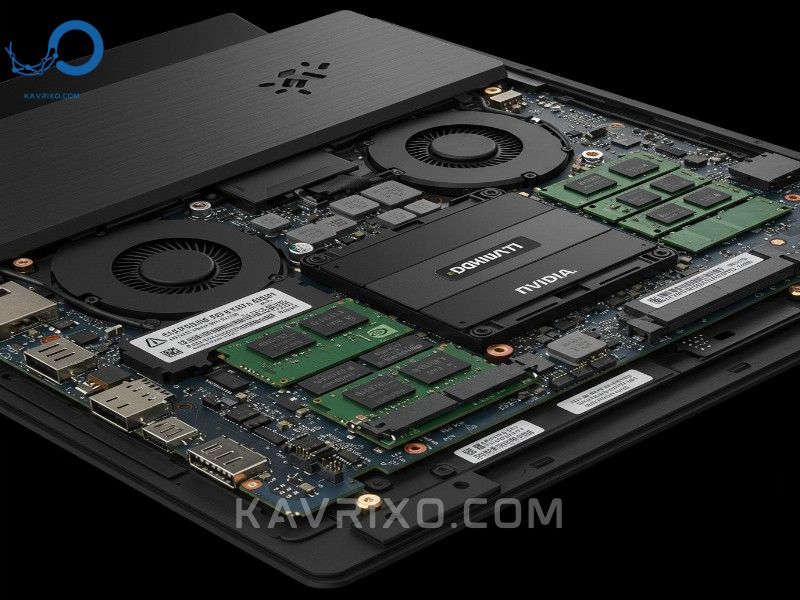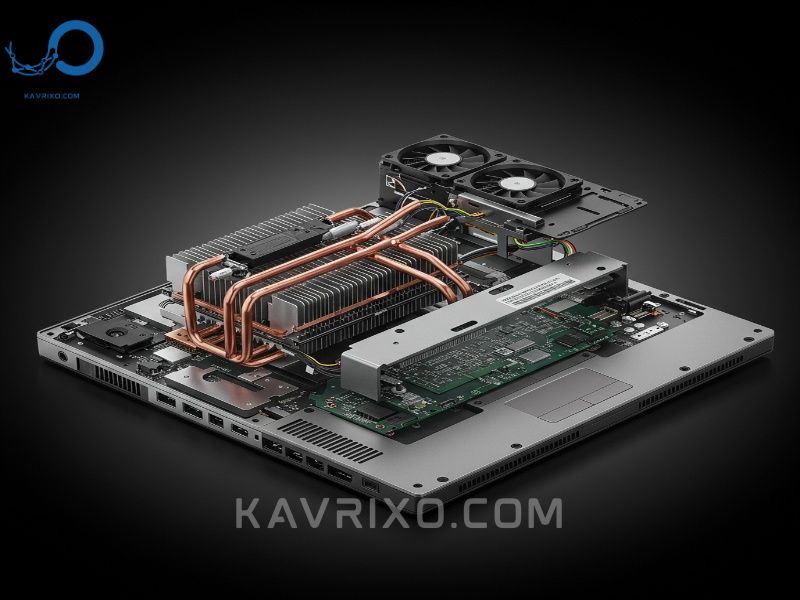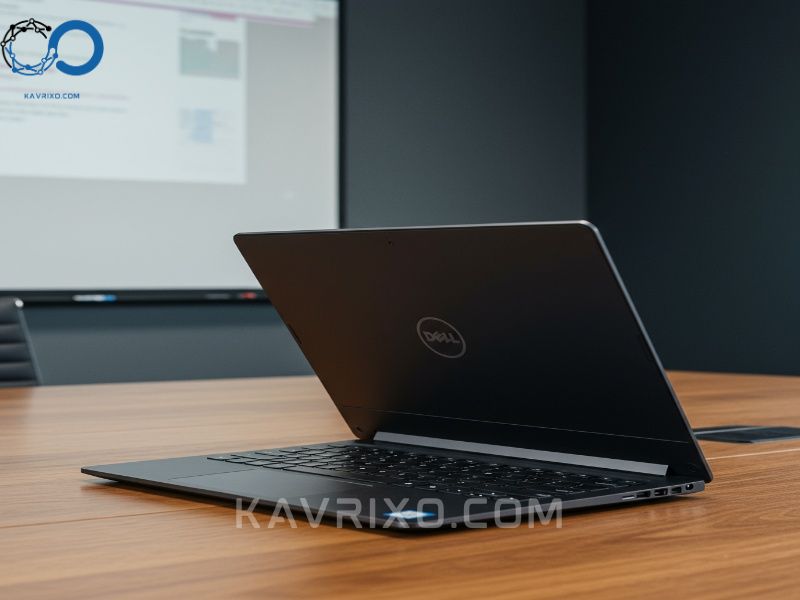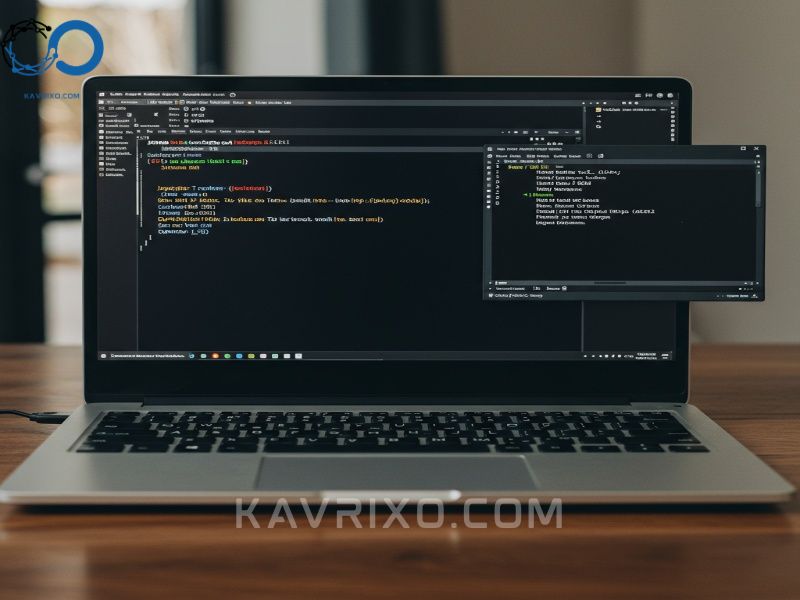If you’re embarking on the journey of artificial intelligence (AI) development, machine learning (ML), or deep learning (DL), you quickly realize that a standard consumer laptop simply won’t cut it. AI is a resource hog—it demands specialized hardware that can handle massive parallel computations, process colossal datasets, and train complex neural networks without melting down.
I’ve spent years working with different hardware setups for data science, and I can tell you firsthand: selecting the best laptop for artificial intelligence isn’t about finding the flashiest design; it’s about strategic component selection. We need a portable powerhouse built for sustained heavy load.
In this comprehensive guide, we’re going to move beyond simple specs sheets. We’ll delve into why certain components are essential, break down the specific needs of different AI workloads, and ultimately help you pinpoint the best AI laptop tailored to your budget and research goals in 2025. Whether you’re a student running basic Python scripts or a professional training large language models (LLMs), I’ll walk you through the necessary considerations to make an informed, long-lasting investment.
Contents
- 1 The Crucial Components: What Makes the Best Laptop for Artificial Intelligence?
- 2 Breaking Down Use Cases: Who Needs Which Best AI Laptop?
- 3 The Top Contenders: Our Picks for the Best AI Laptop 2025
- 4 Software and Ecosystem Considerations
- 5 Advanced Considerations: Future-Proofing Your Investment
- 6 Final Thoughts on Your AI Hardware Investment
The Crucial Components: What Makes the Best Laptop for Artificial Intelligence?
When we talk about AI development, we are primarily talking about intense numerical computation. Unlike video editing or gaming, which rely heavily on CPU speed, AI tasks—especially deep learning—are fundamentally bottlenecked by one thing: the Graphical Processing Unit (GPU).
If you are looking for the best laptop for artificial intelligence, you must prioritize the GPU and its accompanying memory (VRAM) above all else. Everything else is secondary, though still vital for a smooth workflow.
GPU: The Unsung Hero of AI
The GPU is the single most important component for serious AI work. Why? Because neural network training involves billions of repeated matrix multiplications, and GPUs are specifically architected for this kind of parallel processing better than any CPU.
For the vast majority of AI work today, the only viable option is an NVIDIA GPU. This is non-negotiable due to the dominance of NVIDIA’s CUDA platform. CUDA (Compute Unified Device Architecture) is the software layer that allows frameworks like TensorFlow and PyTorch to efficiently utilize the GPU’s parallel processing cores. AMD alternatives exist (ROCm), but the ecosystem support, documentation, and driver stability simply do not compete with NVIDIA for mainstream AI development.
VRAM and Tensor Cores: The Deep Learning Bottleneck
When evaluating a GPU for the best AI laptop 2025, look beyond the core count and focus intensely on VRAM (Video Random Access Memory). VRAM is where your model weights, activations, and input data reside during training.
- Minimum Viable VRAM (Student/Basic ML): 8GB. This is enough for small convolutional neural networks (CNNs), classical machine learning algorithms, and introductory coursework.
- Recommended VRAM (Professional/Serious Research): 12GB to 16GB. This allows you to handle larger batch sizes, work with high-resolution image data, or fine-tune mid-sized LLMs (like smaller variants of Llama or Mistral).
- Optimal VRAM (Heavy Duty/LLMs/Diffusion Models): 24GB or more. This usually means stepping up to mobile workstation GPUs (like the NVIDIA RTX A-series or the top-tier RTX 4090/4080 mobile chips). If you plan on doing serious research into generative AI (Stable Diffusion, large custom LLMs), VRAM is the hard limit on what you can achieve locally.
We also need to consider Tensor Cores. These specialized cores, introduced in NVIDIA’s RTX line, are designed to accelerate the mixed-precision arithmetic common in deep learning, significantly speeding up training times. Make sure your chosen mobile GPU is a modern RTX unit (3000 series or, preferably, 4000 series).

CPU: The Brain for Preprocessing and Inference
While the GPU handles the heavy training, the Central Processing Unit (CPU) remains crucial for overall system responsiveness and specific stages of the AI pipeline. The CPU manages:
- Data Preprocessing: Loading data from storage, transforming it (resizing images, tokenizing text), and feeding it to the GPU.
- Inference (Model Serving): Running simpler models or serving pre-trained models where latency is critical.
- General Development Tasks: Running Python scripts, managing environments (Conda/venv), and compiling code.
You don’t necessarily need the absolute fastest CPU on the market, but you do need modern architecture with a high core count (at least 8 cores, preferably 12 or more, split between performance and efficiency cores). Modern Intel Core i7 (13th or 14th gen) or AMD Ryzen 7/9 processors are excellent choices. Look for high single-core performance combined with robust multi-threading capabilities.
RAM: The Necessity of High-Speed Memory
System RAM (Random Access Memory) acts as the staging area for your data before it is handed off to the GPU. If your dataset is large, or if you are running multiple processes simultaneously (e.g., a Jupyter notebook, a web browser, and a large dataset loader), insufficient RAM will cause your system to swap data to the much slower SSD, severely degrading performance.
- Absolute Minimum: 16GB (for light development).
- Standard Recommendation: 32GB. This is the sweet spot for most professional data scientists. It provides ample space for moderate datasets, complex environment management, and general multitasking.
- Optimal for Data Engineering/LLMs: 64GB. If you handle massive tabular data (GBs in size) or work with huge data loaders that cache intermediate results, 64GB ensures you never hit a memory bottleneck, making it a key feature of the truly best AI laptop.
Furthermore, ensure the RAM is fast (DDR5 is standard in 2025). Speed matters for efficient data transfer between the CPU and the GPU.
Storage: Speed and Capacity
When dealing with datasets that can easily exceed 500GB (think large image collections or text corpora), storage capacity and speed are critical.
You must insist on an NVMe SSD (Non-Volatile Memory Express). These drives are vastly faster than older SATA SSDs, crucial for minimizing the time spent loading massive datasets into memory.
- Capacity Recommendation: Start at 1TB. If you plan on maintaining multiple large datasets and model checkpoints, 2TB is highly advisable. If the laptop allows, look for models with two NVMe slots for future expansion.
Cooling and Portability: Practical Concerns
This is often the most overlooked aspect when searching for the best laptop for artificial intelligence. AI training runs are long—often hours or days—and they push the CPU and GPU to 100% utilization simultaneously.
- Thermal Management: If the cooling system is inadequate, the CPU and GPU will “throttle” (slow down) to manage heat, dramatically increasing your training time. Look for laptops known for their robust cooling systems, often found in high-end gaming laptops or mobile workstations. They typically feature vapor chambers, multiple heat pipes, and large fans.
- Power Delivery: These components require massive power. A high-performance AI laptop will require a bulky power brick (usually 250W to 330W). Don’t expect to run heavy training on battery power alone.
- Display Quality: While less critical for pure computation, a high-quality, color-accurate display is excellent for visualization and debugging models, especially in computer vision.

Breaking Down Use Cases: Who Needs Which Best AI Laptop?
The definition of the “best AI laptop” changes based on your actual workload. Let’s segment the user base to help you narrow down your search criteria.
Entry-Level and Students (Budget-Conscious ML)
If you are just starting out, taking online courses, or focusing primarily on classical ML algorithms (Scikit-learn, XGBoost) rather than deep neural networks, your needs are more modest.
- Key Focus: Good CPU, 16GB RAM, and a decent entry-level RTX GPU (e.g., RTX 4060 or 3060) with at least 8GB VRAM.
- Trade-off: You will need to rely on cloud services (like Google Colab Pro or AWS) for large-scale training tasks, but your local environment will be fast and responsive for development, experimentation, and small model training. You are looking for value and portability here.
Data Scientists (Balanced Performance)
Data scientists often spend more time on data wrangling, visualization, and deploying models than on pure, multi-day training runs. They need a highly reliable system that can handle large data frames in memory.
- Key Focus: High-speed 32GB RAM (essential for Pandas/R), fast 1TB+ NVMe storage, and a mid-to-high-range GPU (RTX 4070/4080) with 12GB to 16GB VRAM.
- Ideal Profile: A high-end gaming laptop or a performance-oriented business laptop that offers 32GB of RAM (often upgradeable). The balance of portability and power is key here.
Professional Developers and Researchers (High-End Deep Learning)
If your job involves training custom LLMs, working with massive datasets, or implementing state-of-the-art vision models, you need the maximum VRAM and sustained performance available in a mobile chassis.
- Key Focus: Maximum VRAM (16GB minimum, 24GB+ preferred), 64GB RAM, and the highest-tier mobile GPUs (RTX 4080, 4090, or professional A-series cards).
- Trade-off: Portability and battery life are sacrificed entirely. These systems are essentially desktop replacements, prioritizing raw computational throughput and excellent cooling above all else. Finding the absolute best laptop for artificial intelligence in this category means accepting a thick, heavy machine.

The Top Contenders: Our Picks for the Best AI Laptop 2025
Based on the criteria above—VRAM capacity, thermal design, and power delivery—certain product lines consistently rise to the top as the best AI laptop 2025 options.
Top Pick for Raw Power: The Workstation/Gaming Hybrid
When performance is non-negotiable, you must look at laptops that blur the line between gaming rigs and mobile workstations. These machines offer the highest wattage GPUs and the most VRAM available in a laptop.
Recommended Series: MSI Titan, ASUS ROG Strix Scar, Razer Blade 18 (Maxed Specs)
These laptops usually house the NVIDIA GeForce RTX 4090 mobile GPU (which often comes with 16GB of VRAM) or, occasionally, the RTX 4080 (12GB VRAM). Crucially, they pair these GPUs with 64GB of DDR5 RAM.
- Why they succeed: Their large chassis are designed explicitly to handle the 150W+ power draw of the top-tier mobile GPUs without immediate thermal throttling. The 4090 mobile chip, while not as powerful as its desktop counterpart, offers exceptional performance density and access to the latest generation of Tensor Cores.
- Consideration: These are expensive, heavy, and offer abysmal battery life. They are meant to be plugged in and treated like a portable desktop.
Best Balance of Performance and Portability
For developers who travel frequently or need a machine that looks slightly more professional than a glowing gaming rig, balancing power with a manageable form factor is essential.
Recommended Series: Dell XPS 16/Precision Series, Lenovo ThinkPad P-Series, Razer Blade 16
These systems often feature the RTX 4070 or 4080 GPU, typically configured with 32GB of RAM. Mobile workstations (like the Dell Precision or Lenovo P-series) are particularly appealing because they often use NVIDIA RTX A-series professional GPUs. While the A-series might offer slightly lower peak clock speeds than the equivalent GeForce chips, they are usually optimized for stability and driver support in professional environments, and crucially, they sometimes offer higher VRAM options (e.g., 16GB or 24GB in high-end configurations).
- Why they succeed: They offer a substantial performance jump over entry-level options while maintaining a sleek, professional look. They are powerful enough for daily training tasks and significant data processing without being overly cumbersome.
- Note on macOS/Apple Silicon: We must address the Mac. Apple Silicon (M-series chips) offers incredible efficiency and unified memory. While fantastic for inference and specialized ML tasks optimized for their Neural Engine (using frameworks like Core ML), they still struggle to compete on raw training speed with a high-VRAM NVIDIA GPU when running standard PyTorch/TensorFlow models due to the lack of CUDA support and limited unified VRAM capacity compared to dedicated VRAM (e.g., the 16GB VRAM on an RTX 4090 versus the 64GB unified memory of an M3 Max). If your primary goal is training large models, an NVIDIA-based Windows/Linux machine is still the best laptop for artificial intelligence.

Best Option for Budget-Minded AI Enthusiasts
If budget constraints are tight, we aim for the best VRAM capacity we can afford, even if it means sacrificing some CPU speed or portability.
Recommended Series: Mid-Range Gaming Laptops (Acer Nitro, HP Victus, specific ASUS TUF models)
Look for models offering the NVIDIA RTX 4060 or 3060/3070 with 8GB VRAM. These are readily available and provide enough power to work through most university-level assignments and smaller personal projects.
- Key Strategy: Buy a model with 16GB of RAM and ensure it is user-upgradeable. Immediately upgrade the RAM to 32GB yourself, which is often far cheaper than buying a pre-configured 32GB model. Prioritize VRAM (8GB) and then system RAM (32GB) over the absolute fastest CPU.
Software and Ecosystem Considerations
Hardware is only half the battle; the software ecosystem determines how efficiently you can utilize that hardware. When selecting the best laptop for artificial intelligence, consider the operating system and compatibility.
Linux vs. Windows for AI Development
Most professional AI development occurs on Linux servers because of its flexibility, stability, and compatibility with core tools. When choosing a laptop, consider how well it supports Linux, even if you plan to start on Windows.
- Windows 11: Excellent for ease of use, gaming performance, and driver installation. Microsoft has improved support for running Linux environments (WSL2), making it a viable option for development. NVIDIA drivers are typically straightforward.
- Linux (Ubuntu/Pop!_OS): If you plan to replicate professional server environments, running native Linux is ideal. However, driver installation, especially for the latest NVIDIA GPUs, can be tricky. Research the specific laptop model’s known Linux compatibility before purchasing.
Driver and Framework Stability (CUDA)
The performance of your AI tools (TensorFlow, PyTorch) is intrinsically linked to your NVIDIA driver and CUDA toolkit version. Always ensure you are running the latest stable drivers. Mobile workstations (like the P-series) sometimes benefit from specialized, stable Studio Drivers, whereas gaming laptops typically use Game Ready Drivers. For serious work, I often recommend sticking to the NVIDIA Studio Drivers for maximum stability and optimization for development tools.

Advanced Considerations: Future-Proofing Your Investment
If you are committing a significant budget to the best AI laptop, you want it to last more than a year. Here are final expert tips for future-proofing:
The Importance of PCIe Lanes and MUX Switches
For peak performance, look for laptops where the GPU is directly connected to the CPU via a high number of PCIe lanes (typically PCIe Gen 4 x16). Some thin-and-light laptops limit the GPU connection to x8 or even x4, which can slightly bottleneck data transfer during intense training.
A MUX switch (Multiplexer) allows the dedicated GPU to output directly to the display, bypassing the integrated graphics. This is crucial as it reduces latency and ensures the dedicated GPU is always running at peak efficiency, preventing bottlenecks caused by the integrated graphics passing frames.
External GPU (eGPU) Boxes: A Stopgap Solution
If you already own a decent laptop (with Thunderbolt 4 or USB4 ports) but need more VRAM, an external GPU enclosure (eGPU) is an option.
While eGPUs offer the ability to connect a full desktop GPU (like an RTX 4090 with 24GB of desktop VRAM) to your laptop, they suffer from significant performance penalties (up to 20-30% loss) due to the limited bandwidth of the Thunderbolt connection. They are better suited for inference or development tasks rather than maximizing training speed. However, they can provide a path to high VRAM that mobile GPUs simply cannot offer yet.

Final Thoughts on Your AI Hardware Investment
Choosing the best laptop for artificial intelligence is a strategic decision that directly impacts your productivity and the complexity of the models you can tackle. Do not skimp on the GPU and VRAM—they are the heart of deep learning.
If I were making a recommendation today for a serious AI practitioner, I would prioritize an NVIDIA RTX 4080 or 4090 mobile GPU with at least 12GB of VRAM, paired with 32GB of DDR5 RAM. This combination provides the best blend of speed, memory capacity, and thermal stability currently available in a portable format.
Remember, this machine is your laboratory. Invest wisely, prioritize thermal management, and you will have a powerhouse capable of taking on the challenges of machine learning and data science well into the future. Happy training!
